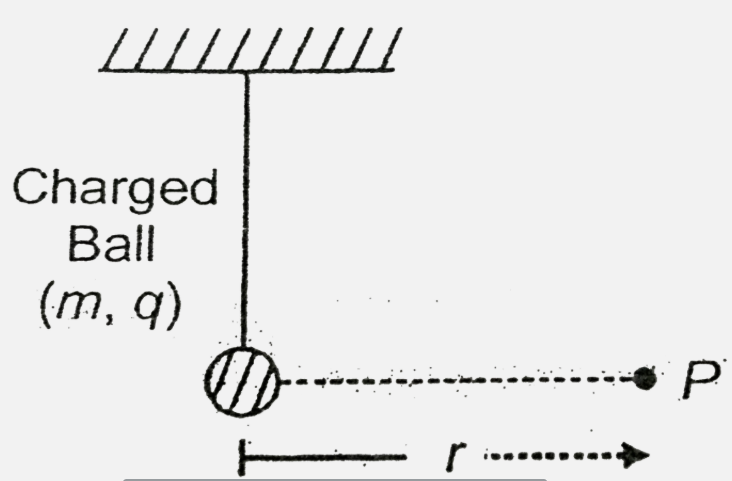The electric field at point P due to a charged ball is given by
Ep=14πε0qr2
To measure 'E' at point P, A test charge q0 is placed at point P and measure electric force F upon the test charge. Check whether Fq0 is equal to 14πε0qr2 or not .

Video Solution
Text Solution
The formula E=14πε0qr2 is valid only when source charge is ficxed. In this problem, source charge is not fixes. When test charge is placed at point P, the ball will be deflected backward. So, Fq0<14πε0.qr2( It is because effective 'r' is increased )
|
Topper's Solved these Questions
- ELECTRIC CHARGES AND FIELDS BOOK - AAKASH INSTITUTECHAPTER - ELECTRIC CHARGES AND FIELDS EXERCISE - TRY YOURSELF
33 Videos
- ELECTRIC CHARGES AND FIELDS BOOK - AAKASH INSTITUTECHAPTER - ELECTRIC CHARGES AND FIELDS EXERCISE - ASSIGNMENT(SECTION-A) Objective Type Question
47 Videos
- DUAL NATURE OF RADIATION AND MATTER BOOK - AAKASH INSTITUTECHAPTER - DUAL NATURE OF RADIATION AND MATTER EXERCISE - ASSIGNMENT (SECTION-D)
10 Videos
- ELECTROMAGNETIC INDUCTIONBOOK - AAKASH INSTITUTECHAPTER - ELECTROMAGNETIC INDUCTIONEXERCISE - ASSIGNMENT(SECTION -D) Assertion-Reason type Question)
15 Videos
Similar Questions
Knowledge Check
As charge q=1μC is placed at point (1m,2m,4m). Find the electric field at point P(0,−4m,3m)
A236.8N/CB200N/CC23N/CD250N/CThe electric intensity at any point due to point charge is E=14π∈0×qr2.In analogy with this,What will be magnetic iduction at a point due to a magnetic charge?
Aπ04πmr2Bπ04πm2r2Cπ02πmr2Dπ04πr2mForce →F acting on a test charge q0 in a uniform electric field →E is
A→F=q0→EB→F=→Eq0C→F=q0→ED→F=q20→E
A point charge q is placed at the origin . How does the electric field due to the charge very with distance r from the origin ?
View Solution" Electric field intensity due to a point charge " "q" ' at a distance 'r' from it is "
View SolutionForce →F acting on a test charge q0 in a uniform electric field →E is
View SolutionA positive charge q0 placed at a point P near a charged of metal sphere experience a force of repulsion of magnitude F, the electric field E of the charge metal, charge at P is
View SolutionA positive charge q0 placed at a point P near a charged of metal sphere experience a force of repulsion of magnaitude F, the electric field E of the charge metal, charge at P is
View Solution


